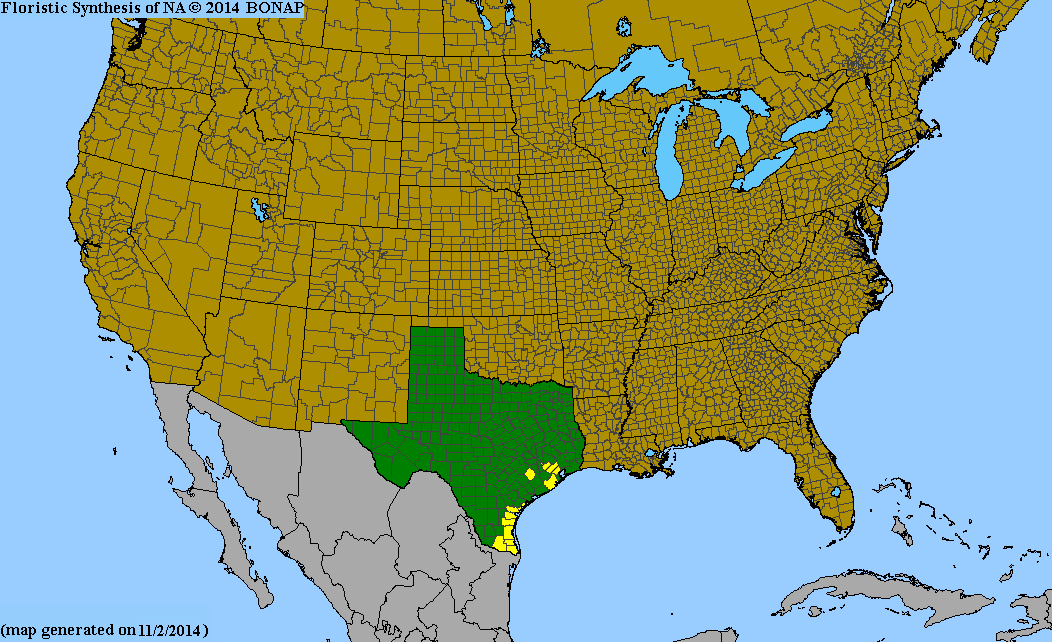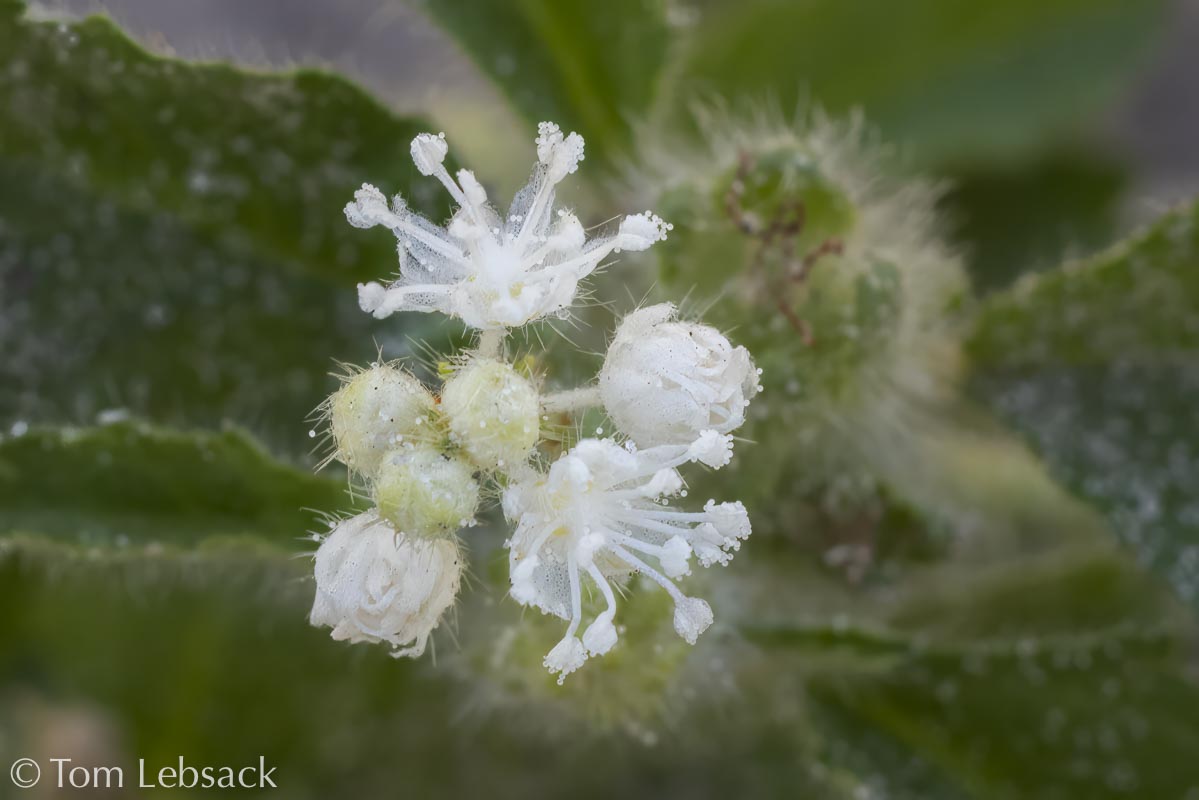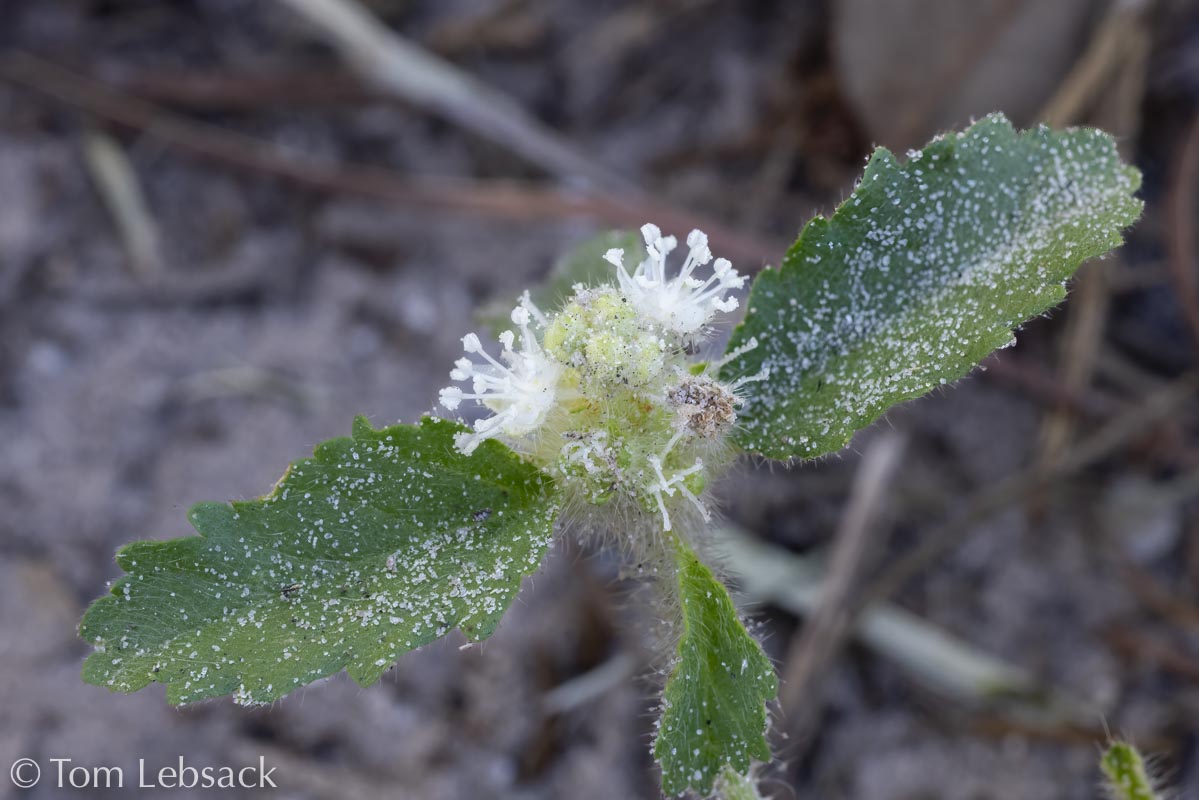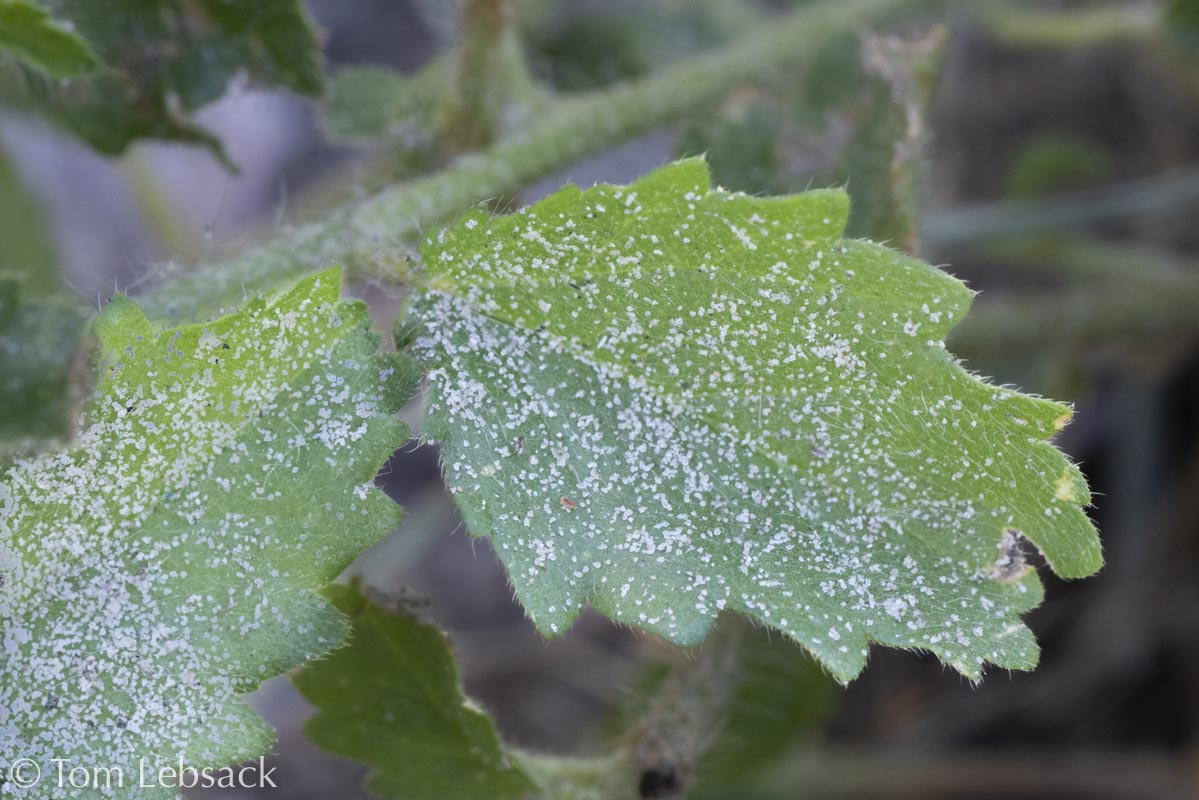Texas Wildbuds
Croton glandulosus var. pubentissimus
(Tropic Croton)
| Scientific Name | Croton glandulosus var. pubentissimus | USDA PLANTS Symbol | CRGL2P |
| Common Name | Vente Conmigo, Tropic Croton, Sand Croton | ITIS Taxonomic Serial No. | 527540 |
| Family | Euphorbiaceae (Spurge) | SEINet Reference |
Click Here |
| Description | Habitat: Sandy soils along roadsides, beaches and coastal dunes. Plant: Branching annual, 2 to 22 inches tall; stems, leaves, and buds are densely stellate (star-like) hairy; var. pubentissimus has trichome hairs that have a longer central hair (up to 2 mm long) compared to the radial hairs. Leaves: Blades are ovate, 3/4 to 2-3/4 inches long and less than half as wide; margins are coarsely crenate to serrate-dentate the tips are obtuse to rounded; both surfaces are green and densely stellate-hairy; whitish, small glands on the underside at the base, about 1 mm or less long; petioles are short, less than 1/8 to 3/8-inch long. Inflorescence: Small blossoms clustered in short racemes 3/8 to 1-1/4-inches long; each staminate (male) cluster with 10 to 20 flowers, each flower with 5 very short (less than 1.5 mm) petals, 7 to 13 stamens, 4 or 5 very short, hairy sepals; pistillate (female) cluster with 1 to 4 flowers, each with 3 styles, no petals, 5 short, hairy sepals. Fruit: Nearly round, smooth capsules 1/8 to 1/4-inch diameter. Bloom Period: May to November. References: "Manual of the Vascular Plants of Texas" by Correll and Johnston, Flora of North America and iNaturalist. Note: Most of the references show C. glandulosus with at least three varieties in Texas, but ITIS considers all to be synonyms. |
BONAP Distribution Map Map Color Key |
Texas Status: Native |
Banner photo of Castilleja indivisa and Lupinus ssp. taken along FM 1323 north of Johnson City, Blanco County
© Tom Lebsack 2025
Every attempt is made to provide accurate, up-to-date, and relevant information, but the completeness or accuracy of any information presented on this website cannot be guaranteed. I use authoritative references to insure high standards of accuracy and review and update the information frequently.


